In today’s world, where urban living often means sacrificing sprawling yards and expansive gardens, many plant lovers face the challenge of creating green spaces in limited areas. This is where vertical flower beds step in as a brilliant solution. By growing upward rather than outward, these beds transform walls, fences, balconies, and even small corners into lush, vibrant gardens. Not only do they maximize space, but they also add striking beauty and bring nature closer to urban life.
This article explores the concept of vertical flower beds, their advantages, creative designs, plant choices, and maintenance strategies for compact spaces.
What Are Vertical Flower Beds?
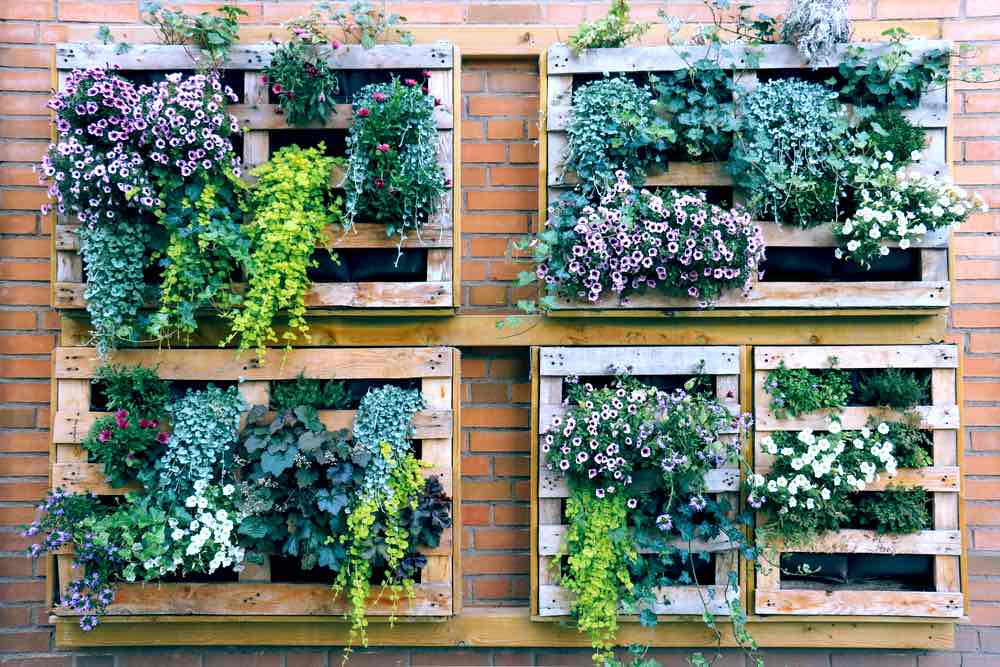
Vertical flower beds are gardening structures that allow plants to grow upwards on walls, trellises, stacked planters, or modular systems. Unlike traditional ground-level beds, vertical beds rely on frameworks that support plants in tiers or panels.
They can range from simple DIY pallet gardens to sophisticated living wall installations. Perfect for balconies, courtyards, patios, or narrow alleys, vertical beds are a versatile option for anyone wanting greenery without needing large ground space.
Benefits of Vertical Flower Beds
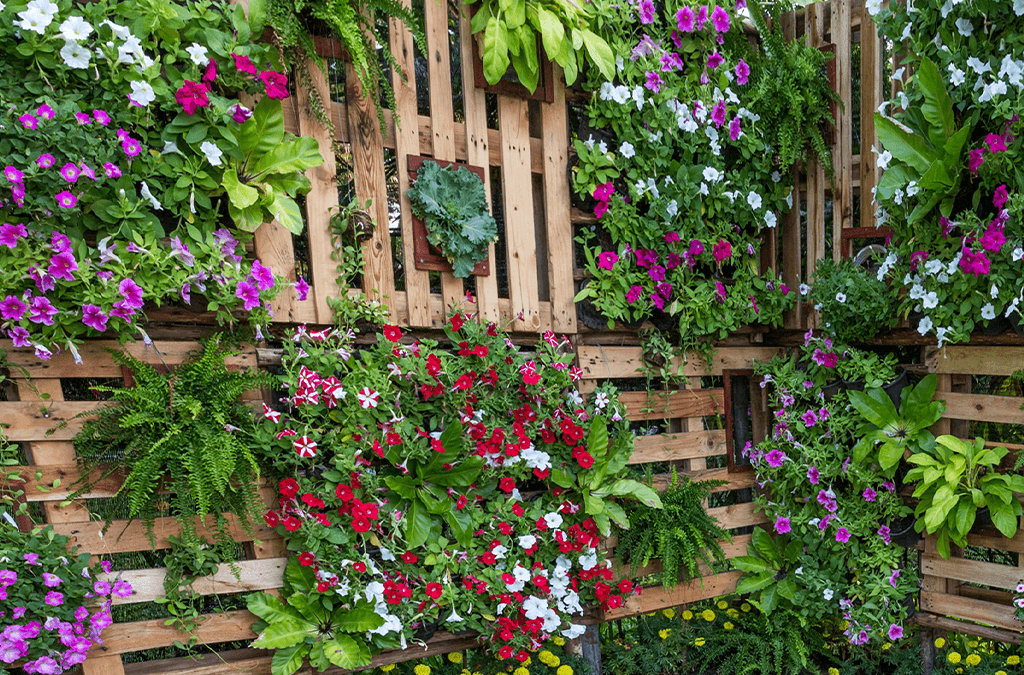
Vertical gardening offers more than just space-saving. Here are some of the key advantages:
1. Maximizing Space
In compact areas, floor space is precious. Vertical beds make use of vertical surfaces, allowing a lush display without occupying much ground.
2. Aesthetic Impact
A wall draped in blooms can serve as a living art piece. Vertical beds add layers, textures, and depth to otherwise plain walls or fences.
3. Improved Air Quality
Plants filter pollutants and release oxygen, improving indoor or patio air quality. Vertical beds create healthier micro-environments.
4. Urban Food Gardens
Beyond flowers, vertical systems can also grow herbs and edible plants. Combining edible greenery with blooms adds both function and beauty.
5. Thermal Insulation
Living walls reduce heat absorption in buildings, acting as a natural insulation system and lowering energy bills in hot climates.
6. Biodiversity Boost
Flowers attract bees, butterflies, and beneficial insects. Vertical beds, even in city apartments, can support urban biodiversity.
Design Ideas for Vertical Flower Beds
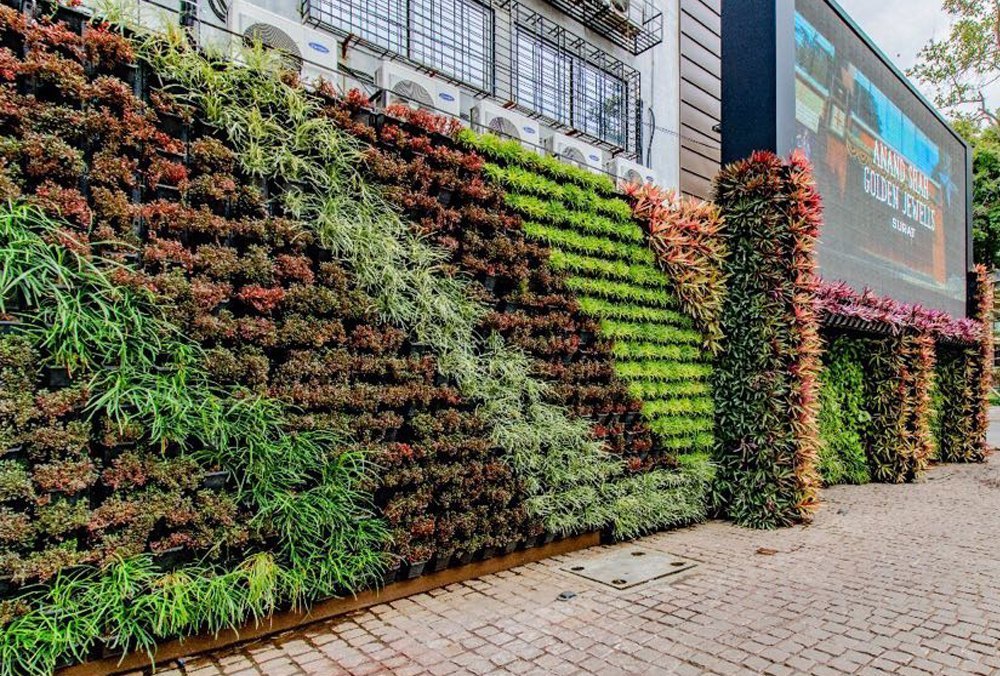
Designing a vertical bed is about creativity and efficiency. Here are some styles that suit compact spaces:
1. Wall-Mounted Planters
- Attach pots, planters, or modular boxes to walls or fences.
- Great for balconies and patios.
- Allows flexibility in arranging colors and plant types.
2. Trellis or Lattice Systems
- Perfect for climbing flowers like morning glories, clematis, or jasmine.
- Adds a romantic, cascading effect while covering unattractive walls.
3. Pallet Gardens
- Repurposed wooden pallets can hold rows of small plants.
- A budget-friendly DIY option for herbs and flowers.
4. Stacked Pots or Tiered Beds
- Create a cascading display by stacking pots of varying sizes.
- Works well for small courtyards or porch corners.
5. Hanging Flower Pockets
- Fabric or felt pockets mounted on walls can hold soil and blooms.
- Lightweight, easy to install, and water-efficient.
6. Living Walls (Green Walls)
- Sophisticated systems with irrigation built in.
- Suitable for indoor or outdoor displays, often featuring dense arrangements of flowers and foliage.
7. Rail Planters for Balconies
- Attach planters to railings to utilize balcony edges.
- Flowers like petunias and trailing nasturtiums spill beautifully over the sides.
Choosing Flowers for Vertical Beds
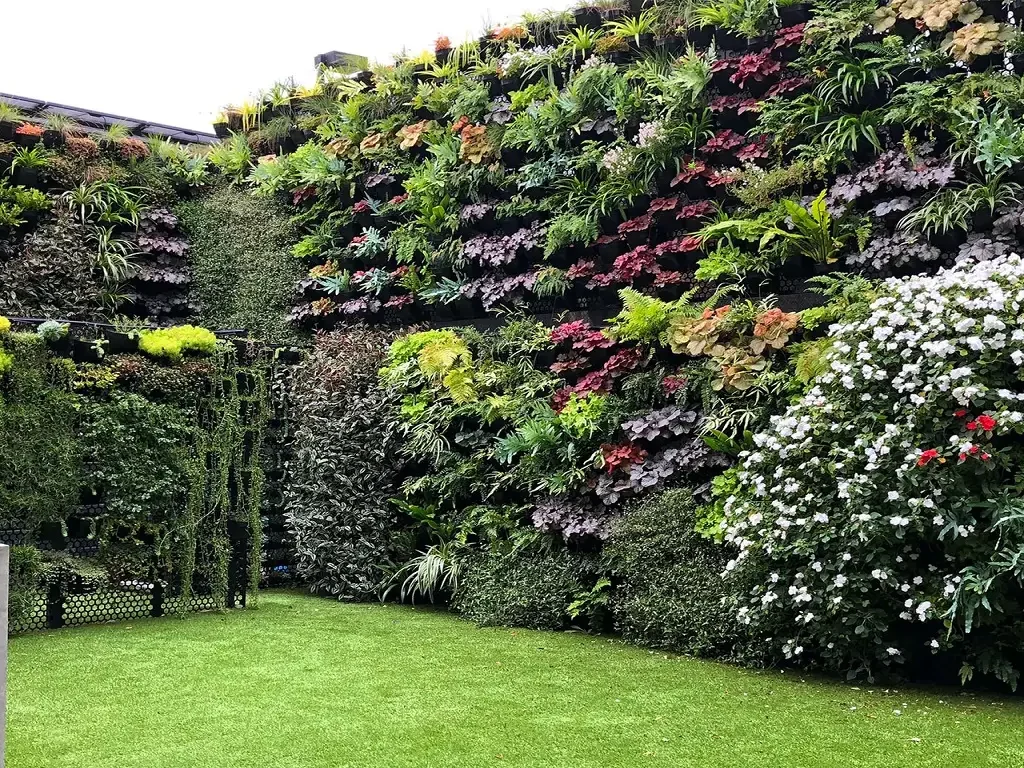
Not all flowers are suited to vertical systems. Compact, trailing, and low-maintenance varieties usually thrive best. Here are some recommendations:
1. Trailing and Cascading Flowers
- Petunias, nasturtiums, sweet alyssum, lobelia.
- These spill downward, softening hard edges.
2. Compact and Upright Flowers
- Marigolds, pansies, zinnias, begonias.
- Perfect for small individual planters in vertical rows.
3. Climbing Flowers
- Clematis, morning glories, jasmine, climbing roses.
- Add height, fragrance, and dramatic visual appeal.
4. Pollinator-Friendly Blooms
- Lavender, salvia, cosmos, sunflowers (dwarf varieties).
- Attract bees and butterflies to small spaces.
5. Evergreen and Foliage Accents
- Ferns, ornamental grasses, ivy.
- Provide year-round texture and structure to vertical beds.
Combining Flowers with Herbs and Edibles
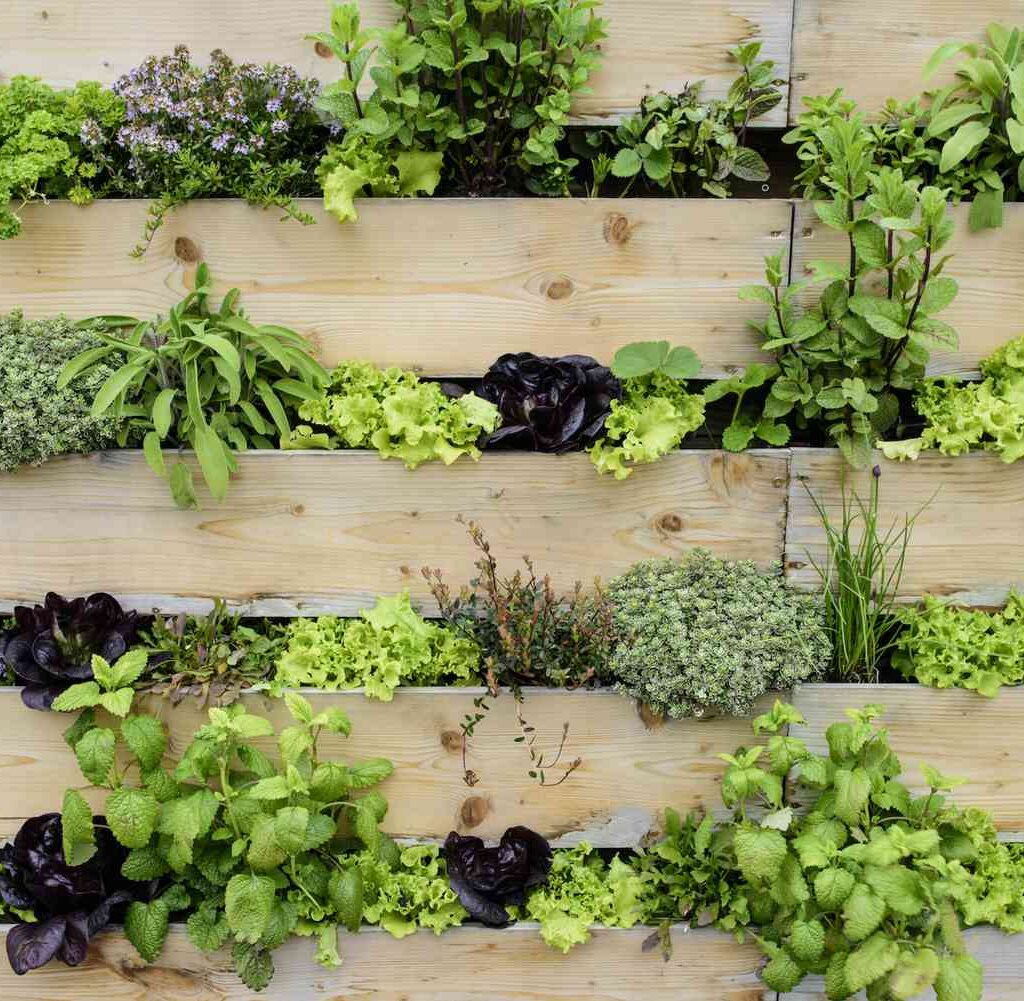
For compact urban spaces, it’s practical to mix flowers with herbs and small edibles. For example:
- Basil with marigolds: Adds beauty and repels pests.
- Strawberries with lobelia: Edible fruit combined with a cascade of blue blooms.
- Thyme with pansies: Ground-hugging herb pairs well with bright seasonal flowers.
This approach ensures your vertical bed is both visually striking and functional.
Installation and Maintenance Tips
Vertical beds require careful planning to keep plants healthy in their unique growing environment.
1. Structure Stability
Choose sturdy materials for walls, trellises, or pallets to support plant weight, especially when watered.
2. Soil and Drainage
- Use lightweight potting mixes with good drainage.
- Avoid heavy garden soil, which compacts in vertical systems.
3. Watering Systems
- Vertical beds dry out faster than ground beds.
- Consider drip irrigation or self-watering planters.
- Water from top to bottom, allowing gravity to assist.
4. Fertilization
Nutrients leach faster in vertical systems. Use slow-release organic fertilizers or compost tea regularly.
5. Sunlight Considerations
- Place sun-loving flowers (e.g., petunias, zinnias) at the top, where light is strongest.
- Shade-tolerant plants (ferns, impatiens) can be placed at lower levels.
6. Pruning and Deadheading
Regular pruning prevents overcrowding. Deadheading extends flowering seasons and maintains a tidy look.
7. Seasonal Adjustments
Swap out flowers according to the season to keep vertical beds vibrant year-round. For example:
- Spring: Pansies, violas.
- Summer: Petunias, marigolds.
- Autumn: Chrysanthemums.
- Winter (in mild climates): Ivy, hardy ferns.
Creative Themes for Vertical Flower Beds
To make your vertical garden stand out, try these themed ideas:
- Color-Themed Walls: All yellow blooms (marigolds, sunflowers, calendula) or purple palettes (lavender, verbena, petunias).
- Fragrance Walls: Combine scented flowers like jasmine, sweet peas, and roses.
- Pollinator-Friendly Beds: Focus on nectar-rich flowers to attract bees and butterflies.
- Mediterranean Flair: Mix bougainvillea with rosemary and lavender for a hot-climate display.
- Modern Minimalism: Use sleek planters with monochrome flowers, like white petunias or hydrangeas.
Beyond Beauty: Extra Benefits
Vertical flower beds aren’t just pretty—they enhance lifestyles and communities:
- Urban Greening: Softens the harshness of concrete jungles.
- Noise Reduction: Dense plant walls absorb sound.
- Therapeutic Effects: Gardening in small spaces provides stress relief and relaxation.
- Community Appeal: Shared vertical gardens on apartment walls foster neighborly interaction.
Conclusion
Vertical flower beds are more than just a clever gardening trick; they’re a practical design solution for compact spaces that combines beauty, sustainability, and function. Whether you’re working with a balcony railing, a small backyard wall, or an indoor corner, vertical gardening allows you to enjoy lush blooms without compromising space.
By choosing the right flowers, planning creative layouts, and maintaining them with proper care, you can transform any blank surface into a thriving living display. In compact living environments, vertical flower beds truly embody the idea that you don’t need more space to have more beauty—you just need to grow smarter.




Leave A Comment